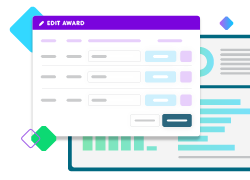Survival in the New Age of Successful Grant Management

I’m not afraid to admit that I’m a big fan of those reality television survival shows.
Not the ones with the fake contests and contrived conflicts, but the ones that pit you against the weather, the wildlife, and the natural environment.
It’s just the contestants against the hard, cruel world, and it either brings out the best or the worst in people. It’s difficult to be indifferent to marauding bears, incessant insect stings, and the lack of food and water. Whether the show participants feel like it or not, they are required to perform daily tasks—like keeping the fire going and boiling water—that aren’t glamorous or fun but keep them alive.
While most nonprofits aren’t gathering sticks to build a fire, survival does often depend on the small, unglamourous tasks of research, communication, and reporting to keep your funding streams alive. Especially with the focus on transparency and keeping stakeholders aligned on progress, funding agencies and donors have increased expectations for risk management, performance management, and financial management.
Successful grant management for your nonprofit, foundation, or federal grant recipient depends on doing the small tasks well, such as internal controls and risk management, while also understanding what opportunities (and threats) are ahead.
Three Best Practices for Successful Grant Management
1. Internal controls are not just for finance people anymore.
For non-finance folks, they may have heard the term “internal controls” in college or in a presentation from the accounting department. Generally, the relevance of internal controls to nonprofit programs had been limited at best. However, over the years, federal grant regulations have moved internal controls from the audit guidance into the administrative requirements, making it more of a priority across the organization.
Contrary to what you might think, internal controls are not about writing a bunch of policy or procedure documents and sticking them in a shared drive to gather digital dust. Instead, internal controls are a living process that exists to ensure that what you say you will do happens as expected, and when it doesn’t, this deviation is detected and corrected. All areas of the organization, including programs, are expected to be partners in applying internal controls throughout the grant lifecycle. For organizations where this isn’t already happening, finance professionals need to lead the charge. The team must review and communicate the importance of these concepts and their practical applications for programs staff, human resources, and IT.
2. Risk Management starts before funding.
If you lived through the American Recovery and Reinvestment Act (ARRA), you know that sometimes grant money can move through the pipeline with little oversight. It was fairly common for grant recipients to spend the bulk of their funding before anyone inquired if the funds were being used as intended. Sure, there may have been lots of interest in the program’s objectives, but when it came to how the money was being spent? Not so much.
Enter the new age of accountability with pre-award federal grant requirements for risk and integrity to be assessed before the first dollar goes out the door. Additionally, as the project moves into the post-award phase, funding agencies and prime recipients have new requirements to manage risk over the life of the award. This can take many forms, including the formalization of sub-recipient monitoring plans to decrease the likelihood of mismanagement. While this may create an additional burden for many grant recipients, the concept of reviewing an organization’s suitability to execute the terms and conditions of the federal award before spending should lead to a reduction in waste, fraud, and abuse of taxpayer funds.
3. Grant management systems are here for the long haul.
How would you describe your grant management systems: a pile of kindling that needs to be stoked regularly to sustain your fire, or a gas-powered stove that makes it easy to manage your survival tasks? A funny thing happened when regulators reviewed the federal grant regulations: requirements that had always been there got a fresh look. All of a sudden, written procedure requirements that have existed for years were reconsidered. Likewise, grant management systems that were addressed in the old grant guidance have taken on new life. Auditors are now looking at things like:
- Can you track the timing of the funds received and expenditures by the individual award?
- Are you able to provide reasonable assurance that the funds were used as intended, such as eligible participants?
- Can you ensure that unallowable costs didn’t find their way into a reimbursement request?
Whether you are using sophisticated grants management software or an Excel® spreadsheet to support your grants, the key points remain the same: do you have a system—a group of components organized for a common purpose—that meets the new requirements?
How to Prepare for Survival: Grant Management Resources
Step One: What resources do you already have?
Any survival expert will tell you that when you find yourself in a difficult situation, start by assessing your available resources. Similarly, the first step in preparing your organization for these changes in grant administration is to assess what things you already have.
- What processes and policies are currently in place?
- How would you describe the current level of understanding of the requirements contained in your award terms and conditions and compliance requirements in general?
- Would you say that upper management and program staff have a high level of involvement and oversight into the grant administration process?
- Is the tone at the top in alignment with the stated priorities of the Council on Financial Assistance Reform (COFAR) and the Office of Management and Budget (OMB) of targeting risk, improving oversight, standardizing business processes, and measuring performance?
Step Two: Where are the greatest opportunities and threats?
The next step in surviving these changes is to conduct a SWOT analysis of strengths, weaknesses, opportunities, and threats. This will tell you where threats are coming from and where you can take advantage of opportunities for thriving in this new environment.
- What does your nonprofit organization do really well?
- What areas of weakness have you identified within your organization?
- Where are new opportunities for your organization to receive additional funding?
- What are the threats for discontinuation of contributions and grants?
This analysis should help you prioritize the tasks that need to be done so you can embrace the opportunities to further your mission through grant funding.
Step Three: How will you thrive?
Now that you have assessed your starting point and identified threats and opportunities, it’s time to move forward with a new vision for the future. The changes to grant administration in this new age of accountability will also require changes to the management systems you need. Think of it this way: increasingly your organization will be funneled into a world of data analytics, increased transparency through online reporting tools, and more and more accountability to provide assurance that grant dollars are flowing as intended.
- How are you going to accomplish this with limited budgets and personnel?
- How will you get the information you need from your grantees without overburdening them or your staff?
- What reporting capabilities do you have to make sense of the data?
Some nonprofit organizations will be in denial or resist these changes, and yet the pace of change will continue to accelerate. Some organizations will seek influence and relief through the legislative branch to slow or stall additional requirements, but if history has taught us anything, it is that compliance requirements tend to grow and not retreat.
Surviving (and Thriving) Through Preparation
The future of grant funding belongs to the prepared. Just like the survivalists of reality TV, the key to staying alive—and even thriving—in the federal grants game is to understand your environment and be ready for what you might encounter. Organizations that embrace the use of technology for efficiency and effectiveness of their management systems will be better positioned to reap the benefits of grant funding going forward.
Are you ready to use data to bring more accountability to your grantmaking, but aren’t sure you have the skills or technology to manage the grant process? Check out this case study on grant management best practices.
This post was originally published in September 2016 and updated in September 2022.
Manage your entire grantmaking workflow, from online grant applications through payments
Find out how Blackbaud Grantmaking™ fits your organization.


